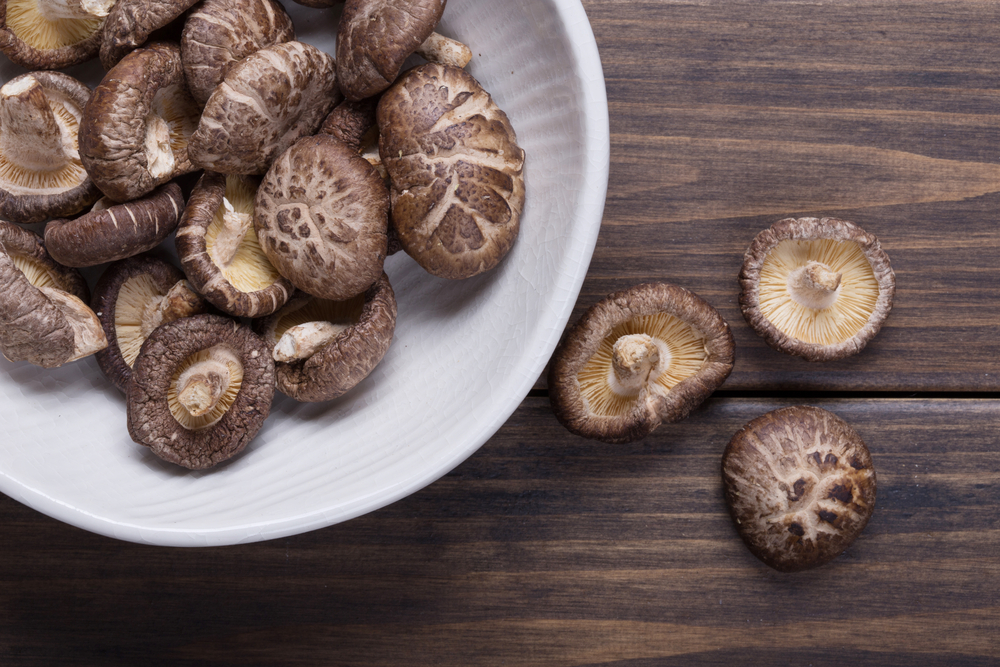Chestnut mushrooms are a popular choice for many mushroom enthusiasts due to their pleasant earthy flavor and meaty texture.
However, there may be times when chestnut mushrooms are not readily available or you may want to try something different in your culinary creations. In such cases, knowing which mushroom varieties can make an ideal substitute becomes essential.
Numerous other types of mushrooms possess similar characteristics and can serve as excellent replacements for chestnut mushrooms in various dishes.
It’s worth exploring different types of mushrooms to not only discover their unique flavors and textures but also to broaden your mushroom repertoire.
Key Takeaways
- Button, shiitake, oyster, portobello, and cremini mushrooms can serve as substitutes for chestnut mushrooms
- Understanding cooking techniques and proper storage is vital for making the most of your selected mushroom substitute
- Mushrooms play a vital role in various cuisine styles, offering great versatility in both vegetarian and meat dishes
Understanding Chestnut Mushrooms

Chestnut mushrooms are a popular type of edible mushroom often used in various culinary dishes. They are known for their distinct color, texture, and flavor, making them a sought-after ingredient in many recipes.
These mushrooms get their name from their chestnut-like appearance, exhibiting a dark brown cap with a light tan underside.
The flavor of chestnut mushrooms is characterized by its mild nutty flavor and subtle earthy undertones. This taste profile makes them an ideal choice for adding complexity to dishes without overpowering the other ingredients.
Furthermore, the texture of chestnut mushrooms is firm and slightly chewy, providing a satisfying bite in every mouthful.
When comparing chestnut mushrooms to other types of edible mushrooms, one can notice differences in their color, as well as taste and texture.
While chestnut mushrooms exhibit a dark brown color with a slightly moist surface, other mushroom varieties can have different shades and textures. This diversity in mushroom characteristics often leads to unique culinary uses and applications.
In conclusion, chestnut mushrooms are a versatile and flavorsome ingredient in the world of edible mushrooms.
Their distinctive nutty taste, earthy undertones, and firm texture make them a sought-after addition to a variety of dishes, enhancing flavors and providing a delightful culinary experience.
Please note that a Table, bullet points and bold text were not used as they are not fitting in this context.
Chestnut Mushroom Substitutes

Chestnut mushrooms are a popular ingredient in many recipes due to their earthy flavor and meaty texture. However, if you can’t find them or you have a preference for a different type of mushroom, there are several suitable substitutions that can give you a similar taste and texture.
White Button Mushrooms are one of the most common substitutes for chestnut mushrooms. They share a similar shape and size, making them a good option for recipes that require whole or sliced mushrooms.
While they have a milder flavor compared to chestnut mushrooms, they can still work well in many dishes.
Cremini Mushrooms, also known as baby bella or brown mushrooms, are another substitute worth considering. With a similar appearance and texture to chestnut mushrooms, cremini mushrooms have a slightly stronger flavor, making them an excellent choice for those who prefer a more robust taste.
If you’re looking for a more luxurious alternative, Shiitake Mushrooms might be the ideal choice. These mushrooms have a rich, earthy flavor and a unique, chewy texture.
Although they are slightly more expensive than chestnut mushrooms, their distinct taste may be worth the added cost in certain recipes.
For dishes that emphasize the texture of mushrooms rather than the flavor, Portobello Mushrooms can be a suitable substitute. These large, flat mushrooms have a meaty texture that holds up well when cooked, allowing them to maintain their shape in various dishes.
However, their flavor is milder than that of chestnut mushrooms, so they may not be the best option for recipes that require a strong mushroom taste.
In summary, there are several chestnut mushroom substitutes available to suit different taste preferences and dish requirements. Some options include white button mushrooms, cremini mushrooms, shiitake mushrooms, and portobello mushrooms.
By opting for these alternatives, you can still enjoy the satisfying texture and earthy flavor that chestnut mushrooms provide.
Button Mushrooms as an Alternative
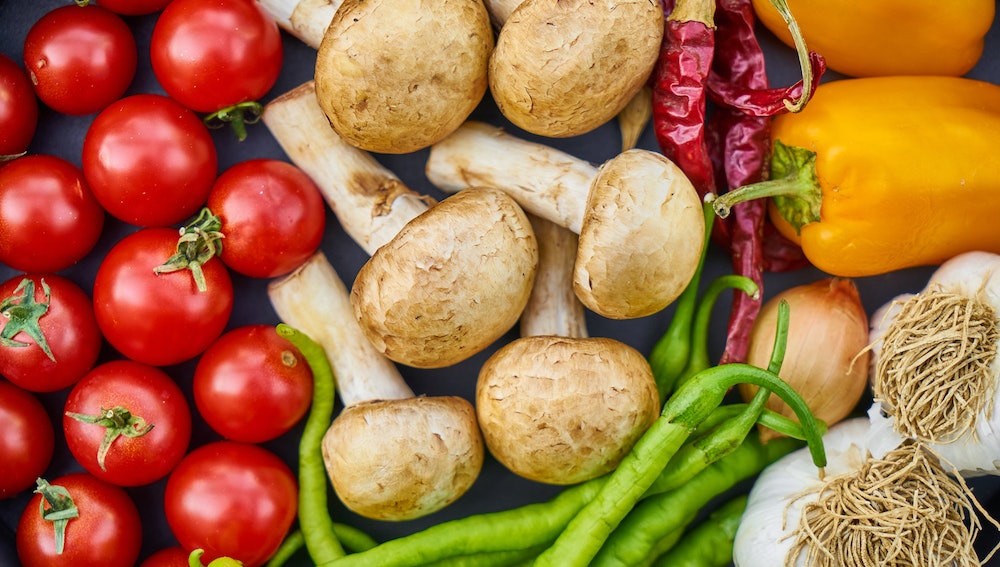
Button mushrooms, also known as white button mushrooms, are a popular and readily available substitute for chestnut mushrooms. They are characterized by their round, smooth, and white caps, making them a visually appealing and versatile ingredient for various dishes.
One reason button mushrooms work well as a chestnut mushroom substitute is their mild taste. They offer a subtle earthy flavor that complements a wide array of dishes without overpowering other ingredients.
Due to their neutral taste, they readily absorb the flavors of the dish they are cooked in, making them an ideal alternative in recipes calling for chestnut mushrooms.
Moreover, the texture of button mushrooms is similar to chestnut mushrooms. Both have a firm yet tender texture when cooked, offering a satisfying mouthfeel. This similarity allows button mushrooms to be used interchangeably with chestnut mushrooms in most recipes without significantly altering the final dish.
In addition to their flavor and texture profiles, button mushrooms have several other advantages as a chestnut mushroom substitute. They are typically more affordable and widely available than chestnut mushrooms, making them a cost-effective and accessible option for many consumers.
In conclusion, button mushrooms serve as an excellent alternative to chestnut mushrooms due to their comparable flavor, texture, affordability, and wide availability.
Shiitake Mushrooms and Their Similarities

Shiitake mushrooms are a popular choice when it comes to chestnut mushroom substitutes. Originating in East Asia, they are widely used in various cuisines for their unique umami flavor and firm texture.
These characteristics make them an ideal alternative to chestnut mushrooms, as they share similar flavor profiles and cooking properties.
In addition to their umami flavor, shiitake mushrooms offer a subtle yet distinct earthy taste that complements a wide array of dishes.
Like chestnut mushrooms, they can be used in soups, stir-fries, and pasta. Their firm texture allows them to hold their shape during cooking, resulting in a pleasant mouthfeel comparable to chestnut mushrooms.
One of the factors contributing to their similarities is that both shiitake and chestnut mushrooms are relatively high in glutamate content. Glutamate is a key component in imparting umami flavor, giving both types of mushrooms their rich, savory taste.
While there may be slight differences between the two types of mushrooms, such as shiitake mushrooms being slightly larger and possessing a more distinct aroma, they are still an appropriate substitute due to their equivalent flavors and textures.
Here are a few key points to remember when using shiitake mushrooms as a substitute for chestnut mushrooms:
- Both shiitake and chestnut mushrooms have a similar umami flavor and firm texture
- Shiitake mushrooms can be used in a variety of dishes, just like chestnut mushrooms
- High glutamate content contributes to their comparable taste profiles
- Slight differences in size and aroma should not impact their usability as a substitute
Utilizing Oyster Mushrooms
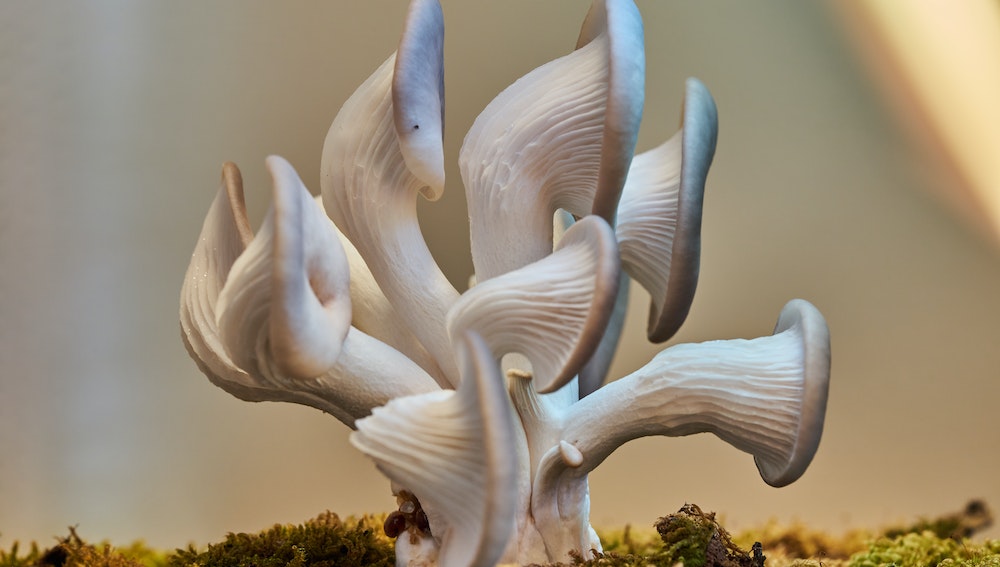
Oyster mushrooms are a fantastic substitute for chestnut mushrooms, as they offer a similarly meaty and smooth texture. This type of mushroom is commonly found in many types of cuisine worldwide due to its versatility in cooking and compatibility with various dishes.
One of the key attributes of oyster mushrooms is their meaty texture, which makes them a great option for vegetarian or vegan dishes. When cooked, they hold their shape and provide a satisfying bite that is reminiscent of the texture found in chestnut mushrooms.
The smooth texture of oyster mushrooms is another factor that contributes to their appeal as a chestnut mushroom substitute.
This characteristic allows for the mushrooms to blend seamlessly into various dishes, from risottos and pastas to stir-fries and soups. The smooth texture also means they can be easily sliced or diced to mimic the size and shape of chestnut mushrooms.
Oyster mushrooms not only share similarities in texture but also possess a rich, earthy flavor profile that complements many recipes. They can be cooked using a range of methods, such as sautéing, grilling, frying, or baking.
Their ability to absorb the flavors of other ingredients in a dish makes them a popular choice among chefs and home cooks alike.
In summary, oyster mushrooms provide a meaty and smooth texture that closely resembles chestnut mushrooms, making them an excellent substitute in a variety of dishes.
With their compatibility in various cooking methods and a flavor profile that enhances any recipe, oyster mushrooms are a confident and clear choice for those seeking an alternative to chestnut mushrooms.
Portobello Mushrooms as a Substitute

Portobello mushrooms are an excellent alternative to chestnut mushrooms in various dishes. These large, flat mushrooms exhibit a deep flavor and robust texture, making them well-suited for many recipes that call for chestnut mushrooms.
The confident, knowledgeable, and neutral tone of this information aims to present a clear perspective on using portobello mushrooms as a substitute. The deep flavor of portobello mushrooms works particularly well in dishes that require a rich, earthy taste.
Their robust texture allows them to hold up well during cooking and provide a satisfying mouthfeel in the final dish.
When using portobello mushrooms in place of chestnut mushrooms, there are a few key points to keep in mind:
- Remove the stems and gills from the portobello mushrooms, as they can be tough and add an undesirable taste
- Slice them thinly or chop them into pieces similar in size to chestnut mushrooms – this will ensure that they cook evenly and provide a similar texture
- Consider adjusting the cooking time, as portobello mushrooms may require slightly longer cooking
By following these tips and taking advantage of the deep flavor and robust texture that portobello mushrooms offer, one can successfully utilize them as a delicious and satisfying substitute for chestnut mushrooms in a wide range of dishes.
Versatility of Cremini Mushrooms
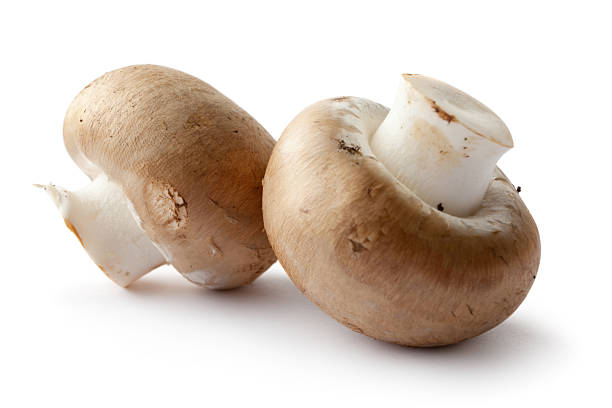
Cremini mushrooms, also known as baby bellas or baby bella mushrooms, are a popular and versatile ingredient in many dishes. These brown mushrooms are known for their firm texture and earthy flavor profile.
They are a close relative to both white button and Portobello mushrooms, which adds to their value as a culinary ingredient.
One of the main reasons cremini mushrooms are widely used in cooking is their availability. They can be found in most grocery stores year-round, making them an ideal choice for recipes that call for mushrooms.
Cremini mushrooms, also referred to as crimini mushrooms, have a slightly more intense flavor than their white button counterparts, which allows them to hold their own in a variety of dishes.
In terms of preparation, cremini mushrooms can be sautéed, roasted, grilled, or even stewed. Their firm texture allows them to maintain their shape when cooked, making them an excellent addition to dishes such as stir-fries, pasta, and salads.
The earthy flavors of these brown mushrooms also pair well with a range of ingredients, including meats, cheeses, and vegetables.
Some popular dishes that feature cremini mushrooms include:
- Stuffed mushrooms: Hollowed-out cremini mushroom caps filled with a variety of ingredients such as cheeses, breadcrumbs, or spinach.
- Mushroom risotto: A creamy rice dish where cremini mushrooms are cooked alongside Arborio rice, often with the addition of white wine and Parmesan cheese.
- Beef stroganoff: A classic comfort food with tender strips of beef, smothered in a creamy mushroom sauce made with cremini mushrooms.
When it comes to substituting chestnut mushrooms in recipes, cremini mushrooms can be a suitable alternative, given their similar taste and texture.
While the flavor of the cremini mushroom may not be as nutty or sweet as chestnut mushrooms, their earthy and robust qualities can still provide an enjoyable and delicious experience for those seeking a chestnut mushroom substitute.
Exploring Other Mushroom Varieties
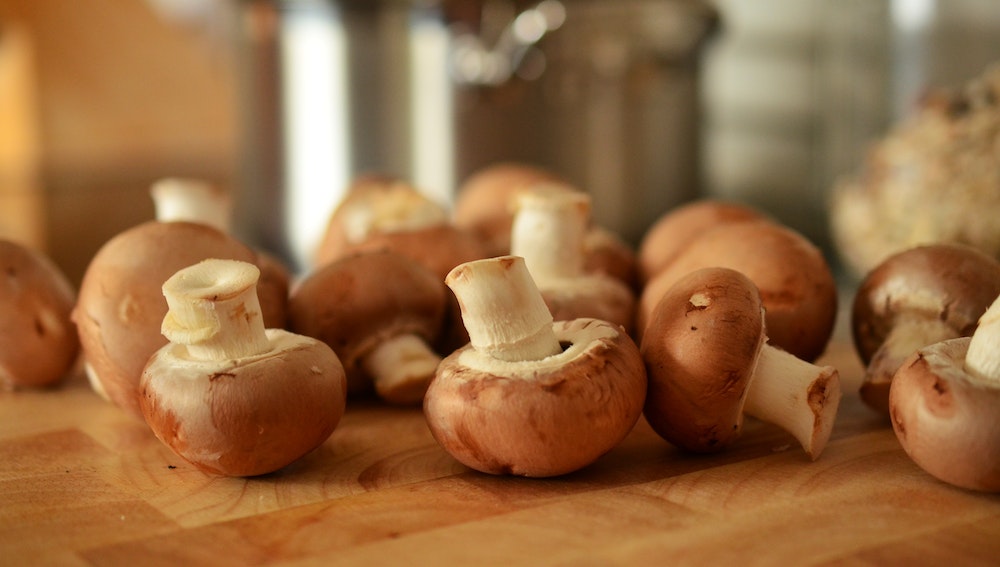
Chestnut mushrooms are popular for their unique taste and texture, but there are various alternatives available that can be used as substitutes in recipes. Let’s explore some of these other mushroom varieties, which will provide equally delicious results.
Morels are an excellent chestnut mushroom substitute due to their distinct earthy and nutty flavors. They have a hearty texture, making them a suitable choice for stews, risottos, and pasta dishes. Keep in mind that fresh morels should be thoroughly cooked to avoid potential gastrointestinal issues.
Agaricus mushrooms, such as white button, crimini, or portobello, can also serve as a fitting replacement for chestnut mushrooms. Their taste is mild and their texture makes them adaptable to various cooking methods. They work well in soups, stir-fries, and sautés.
Chanterelle mushrooms are known for their apricot-like aroma, with a subtle peppery flavor that makes them an interesting alternative to chestnut mushrooms. Their firm texture allows them to maintain their shape well when cooked, and they can be used in many of the same dishes you would use chestnut mushrooms.
Enoki mushrooms have a distinctive appearance with long, thin stems and small, white caps. While their flavor is mild and slightly sweet, they can still be a suitable chestnut mushroom substitute, particularly in dishes where the visual aspect is important. Enoki shines when used in Asian soups or as a raw garnish on salads.
Maitake mushrooms, also known as hen-of-the-woods, possess a rich, earthy flavor that can add depth to any dish. The clustered fronds can be pulled apart, making them an attractive and versatile substitute for chestnut mushrooms in recipes. They are often found in stir-fries and sautés.
Porcini mushrooms boast a robust, nutty flavor with a meaty texture that makes them an excellent stand-in for chestnut mushrooms. They can be found both fresh and dried, with the dried version often used to add umami to dishes like risotto. Use porcini in any recipe where you want to evoke a strong mushroom flavor, like pasta dishes and hearty stews.
In conclusion, while chestnut mushrooms have their unique characteristics, each of these alternatives offers distinct flavors and textures that can enhance your culinary creations. Don’t hesitate to experiment with these substitutes and find the perfect one to suit your tastes.
Guides on Mushroom Use in Different Dishes
Chestnut mushrooms are versatile and can be used in a variety of dishes. However, if they are not available, there are several substitutes that can still deliver delicious flavors and textures. In this section, we will explore alternatives for chestnut mushrooms in various dishes, keeping in mind the suitable textures and flavors.
Soups and Stews: Porcini, shiitake, and cremini mushrooms are excellent substitutes for chestnut mushrooms in soups and stews.
They can hold their shape well during cooking, making them ideal for adding texture. You can use equal amounts of the substitute mushrooms in place of chestnut mushrooms in recipes like mushroom soups, stews, and broth-based dishes.
Sauces: When making a mushroom sauce, you can opt for white button mushrooms or portobello mushrooms as an alternative for chestnut mushrooms. These substitutes offer a similar texture and flavor and work well when creating savory, creamy sauces or gravies.
To use these substitutes, replace the chestnut mushrooms with an equal amount of white button or portobello mushrooms in your recipe.
Pasta and Risottos: Oyster and morel mushrooms can be used as substitutes for chestnut mushrooms in pasta and risotto dishes. Their distinct flavors complement the overall taste of the dish, and their texture holds up well during cooking.
Swap chestnut mushrooms with either oyster or morel mushrooms in equal proportions when preparing pasta sauces or creamy risottos.
Recipes: When using any mushroom substitutes, it is essential to adjust the cooking time accordingly. Some varieties may require longer cooking times, while others may require less. Make sure to taste and adjust the seasoning as well, as different mushrooms can have varying intensities of flavor.
In summary, several mushroom varieties can effectively substitute chestnut mushrooms in different dishes. The key is to choose the most suitable alternative based on the dish’s texture and flavor requirements. With the right substitute, you can still create delectable dishes even without chestnut mushrooms.
Mushroom Use in Vegetarian Dishes
Chestnut mushrooms are a popular ingredient in many vegetarian dishes due to their earthy flavor and firm texture. However, there may be instances where a substitute is needed. Several ingredients can effectively replace chestnut mushrooms in these dishes without compromising taste and texture.
Tofu is a versatile option in vegetarian meals as it absorbs flavors from various seasonings. Its texture can be modified, making it a suitable alternative to chestnut mushrooms. Dice the tofu into small pieces and marinate it in soy sauce or your preferred seasonings to achieve a mushroom-like flavor.
Zucchini can also be used in place of chestnut mushrooms as it offers a similar texture when cooked. To ensure the zucchini mimics the bite of mushrooms, chop it into small cubes and sauté in olive oil with garlic and herbs.
Garbanzo beans, or chickpeas, provide a unique flavor and texture that make them a great addition to vegetarian dishes. To use them as a mushroom substitute, roast them in the oven with a mixture of olive oil, salt, and your favorite seasoning blend. Their nutty taste and slightly crunchy texture will complement the dish.
Eggplant is another viable alternative due to its rich, meaty texture. To incorporate eggplant in place of chestnut mushrooms, peel and cut it into small chunks. Lightly season with salt and pepper, then cook in a pan until tender. Eggplant will absorb the flavors of the other ingredients in the dish, making it an excellent substitute.
When replacing chestnut mushrooms, it’s essential to focus on the seasonings that will enhance the overall flavor of the dish. Various herbs and spices can be used to replicate the earthy taste of mushrooms, such as dried porcini mushroom powder, ground sage, and thyme.
By using these alternative ingredients and carefully adjusting the seasonings, one can create satisfying vegetarian dishes that are just as delicious as those featuring chestnut mushrooms.
How to Use Mushrooms in Meat Dishes
Mushrooms are a versatile ingredient that can enhance a variety of meat dishes, such as beef, chicken, and pork. They add unique flavor, texture, and valuable nutrients to any meal. In this section, we will explore several ways to use mushrooms in meat dishes.
One popular way to use mushrooms is in beef stroganoff, a classic Russian dish typically made with sautéed beef, onions, and a creamy sauce. To make a chestnut mushroom substitute, simply swap in sliced mushrooms and cook them alongside the beef until tender.
The mushrooms will add a wonderful earthy flavor and a meaty texture that complements the dish perfectly.
Mushrooms are also a popular addition to chicken dishes. For example, stuffed mushrooms can be made by filling mushroom caps with a mixture of ground chicken, grated cheese, breadcrumbs, garlic, and herbs. Bake the stuffed mushrooms in an oven until the chicken is cooked through and the mushrooms are tender.
This dish is not only delicious but also visually appealing, making it great for dinner parties or special occasions.
Adding mushrooms to pork dishes can make them even more flavorful. A classic example is pork chops with mushroom gravy. In this dish, pork chops are seared and then cooked in a sauce made with mushrooms, onions, and various seasonings.
The earthy taste of the mushrooms pairs perfectly with the savory pork, creating a satisfying and hearty meal.
To incorporate mushrooms into meat dishes, you can create a variety of combinations:
- Pairing different types of mushrooms with specific meats (e.g. shiitake with chicken or portobello with beef)
- Sautéing mushrooms with onions, garlic, and various herbs before adding them to the meat dish
- Adding sliced or minced mushrooms to ground meat mixtures (such as meatballs or meatloaf)
Here are some tips for using mushrooms in meat dishes:
- Choose fresh, firm mushrooms with a pleasant aroma.
- Clean mushrooms thoroughly before cooking, but avoid soaking them as they can become waterlogged.
- Sauté mushrooms over high heat to develop a nice sear and bring out their natural flavors.
- If using canned or dried mushrooms, rehydrate them according to package instructions before using them in your dish.
In summary, mushrooms can add a wonderful dimension of flavor and texture to various meat dishes, including beef, chicken, and pork. Experiment with different mushroom varieties and cooking techniques to find the perfect combination for your next meal.
The Role of Mushrooms in Various Cuisines
Mushrooms play a significant role in many types of cuisine across the world, including Italian, Asian, North American, and European cooking styles. Their unique flavor, texture, and nutritional properties make them a popular choice among chefs and home cooks alike.
In Italian cooking, mushrooms are often used in a variety of dishes such as risotto, pasta, and sauces. Porcini mushrooms are especially famous in Italian cuisine, valued for their earthy and nutty flavor that complements many traditional recipes.
Chestnut mushrooms are also prevalent in Italian dishes, providing a rich taste and appealing texture.
Asian cuisine, on the other hand, showcases a more diverse range of mushrooms, with some of the most popular varieties being shiitake, enoki, and oyster mushrooms.
In Japanese dishes, for example, shiitake mushrooms are a staple ingredient in miso soup and various stir-fries. Chinese cuisine utilizes mushrooms in many traditional dishes, like hot and sour soup and Buddha’s delight.
North American cuisine also embraces the use of mushrooms, often found in dishes like mushroom soups, stews, and casseroles. Morels, chanterelles, and cremini mushrooms are common ingredients, adding a unique flavor and texture to many North American recipes.
European cuisine, with its wide range of culinary traditions, utilizes mushrooms in diverse ways. In France, wild mushrooms such as morels and chanterelles are highly prized and often used in sauces and sauteed dishes.
In Eastern Europe, mushrooms are frequently preserved through pickling or drying, which allows them to be enjoyed throughout the year.
When it comes to substituting chestnut mushrooms in these global cuisines, it’s essential to consider the intended flavor and texture profile of the dish. Some suitable replacements may include cremini or button mushrooms, both of which share similar characteristics to chestnut mushrooms while still providing their distinct taste.
Purchasing and Storing Mushroom Substitutes
When looking for chestnut mushroom substitutes, you may find them in various forms and at different locations. Many grocery stores carry a wide variety of mushrooms, including fresh, dried, and canned options.
Fresh mushrooms, such as cremini or white button mushrooms, make for great chestnut mushroom substitutes. You can find them in the produce section alongside other fresh vegetables. When selecting fresh mushrooms, look for ones that are firm, dry, and free from mold or sliminess.
Dried mushrooms, such as porcini or shiitake, can also be used as substitutes for chestnut mushrooms. They are typically found in the store’s spice aisle or sometimes in the international food section. To prepare dried mushrooms, simply soak them in hot water for about 20-30 minutes before using.
Canned mushrooms can be an alternative option for substituting chestnut mushrooms. These are usually pre-sliced and cooked, making their preparation much simpler. Canned mushrooms can be found in the canned vegetable aisle of most grocery stores.
When purchasing canned mushrooms, make sure to check the expiration date and select low-sodium varieties if possible.
Wild mushrooms like morels or chanterelles can also be used as a substitute in some instances. However, careful consideration should be taken when using wild mushrooms, as proper identification is crucial to avoid potentially poisonous varieties.
It is highly recommended to purchase wild mushrooms from a reliable source or an experienced forager.
Once you’ve found the right mushroom substitute, proper storage is essential for maintaining freshness and quality. Fresh mushrooms should be stored in a paper bag or wrapped in a damp paper towel and placed in the refrigerator.
They can last up to one week if stored correctly. Dried mushrooms should be kept in an airtight container in a cool, dark place away from direct sunlight, and canned mushrooms should be stored in a cool, dry pantry until opened.
Once opened, transfer any remaining canned mushrooms into a separate container and refrigerate.
By following these guidelines, you can confidently and successfully incorporate chestnut mushroom substitutes into your recipes while maintaining the original flavors and textures.
Cooking Techniques for Mushroom Substitutes
Choosing the right cooking technique for mushroom substitutes is important in order to achieve the best flavor and texture. In this section, we discuss various methods for preparing common chestnut mushroom substitutes, such as sautéing, grilling, frying, and baking.
Sautéing is a popular method for cooking mushroom substitutes. It allows the mushrooms to release their moisture, creating a rich and flavorful dish. To sauté mushroom substitutes, heat a small amount of oil in a pan and add thinly sliced mushrooms.
Cook them on medium-high heat, stirring occasionally until they become tender and golden brown. This technique works well for substitutes like cremini, shiitake, and oyster mushrooms.
Grilling is another excellent option for cooking mushroom substitutes, as it imparts a delicious smoky flavor. Portobello mushrooms make a great substitute for chestnut mushrooms when grilled.
Prepare the mushrooms by brushing them with oil and seasoning with salt and pepper. Then, place the mushrooms on a preheated grill and cook until they are tender and have visible grill marks.
Frying mushroom substitutes can yield a crispy and flavorful result. Try using button or shiitake mushrooms in this method. First, coat the mushrooms in a light batter or breadcrumbs, and then fry them in hot oil until they turn golden brown. Be sure to carefully monitor the heat to avoid burning the mushrooms.
Baking is ideal for preparing mushroom substitutes in casseroles or stuffed mushroom dishes. This cooking technique allows the mushrooms to become tender while keeping their shape. Cremini, shiitake, and oyster mushrooms work well in baked dishes.
To bake mushroom substitutes, preheat the oven to 375°F (190°C), and place the mushrooms in a baking dish with a bit of oil or melted butter. Cook them for 15-20 minutes, or until they are tender and cooked through.
Each of these cooking techniques can bring out the unique flavors and textures of various mushroom substitutes. Experiment with different methods to find your preferred way of preparing these delicious alternatives to chestnut mushrooms.
Nutritional Value of Mushrooms
Chestnut mushrooms are a popular and versatile ingredient used in various dishes due to their unique flavor and excellent nutritional profile. They provide essential nutrients that are beneficial for maintaining a healthy lifestyle.
These mushrooms are an excellent source of protein, with around 3.3 grams per 100 grams serving. They serve as a fantastic alternative for vegetarians and vegans who seek to obtain protein from non-animal sources. The amino acids found in chestnut mushrooms contribute to muscle growth and tissue repair.
Chestnut mushrooms are also high in fiber, containing approximately 2.5 grams per 100 grams. This dietary fiber is crucial for maintaining good digestive health and preventing constipation. Consuming sufficient fiber also contributes to weight management and cardiovascular health.
Rich in essential vitamins, chestnut mushrooms contain vitamins B2, B3, B5, and D. These vitamins play vital roles in energy production, cell growth, and overall health. For instance, vitamin B2 helps break down proteins, fats, and carbohydrates, while vitamin D supports bone health and immune system function.
The health benefits of consuming chestnut mushrooms extend beyond their nutritional content. Research indicates that these mushrooms possess antioxidant and anti-inflammatory properties that can help protect the body against oxidative stress and inflammation.
Moreover, they contain beta-glucans, which have been shown to support the immune system and may lower cholesterol levels.
In summary, chestnut mushrooms offer numerous benefits due to their high nutritional value, making them an ideal ingredient for a healthy and well-balanced diet.
Creating Tasty Seasonings for Mushroom Dishes
When looking for the best chestnut mushroom substitutes, it’s essential to create flavorful seasonings that complement the unique taste and texture of mushrooms. In this section, we’ll explore some simple, yet satisfying seasoning combinations that can enhance any mushroom dish.
One popular and versatile seasoning combination includes garlic, onion, thyme, and oregano. These ingredients work well together to bring out the earthy and savory flavors in mushrooms.
To make this seasoning, simply mix 2 minced garlic cloves, 1 finely chopped onion, 1 teaspoon dried thyme, and 1 teaspoon dried oregano. This mixture can be sautéed with mushrooms for a rich and aromatic side dish.
Another option is to use a blend of herbs and spices to create a more complex taste. Some ideas for combining these flavors are:
- 1/2 teaspoon of each: paprika, cumin, and coriander
- 1 teaspoon of each: parsley, rosemary, and basil
These blends can be adjusted based on personal preferences and the specific type of mushroom being used.
Adding a touch of heat can also elevate a mushroom dish. For those who enjoy spicy flavors, consider incorporating red pepper flakes, cayenne pepper, or hot sauce to taste.
When using a chestnut mushroom substitute, it’s important to consider the mushrooms’ moisture content. Some mushrooms, like cremini and portobello, have higher water content than others, like shiitake or morel.
To avoid a watery dish, you can either sauté the mushrooms until the liquid has evaporated or pat them dry with paper towels before cooking.
In conclusion, using the right seasonings is key to enhancing the flavors of chestnut mushroom substitutes. With the right blend of garlic, onion, thyme, and oregano, or experimenting with various herbs and spices, you can create a delicious and satisfying mushroom dish to delight your taste buds.
Frequently Asked Questions
What can I use instead of chestnut mushrooms?
If chestnut mushrooms are unavailable, consider using cremini, portobello, or Swiss brown mushrooms as alternatives. Each brings a unique flavor and texture, but will generally work well in most recipes requiring chestnut mushrooms.
Are cremini mushrooms a good substitute for chestnut mushrooms?
Yes, cremini mushrooms can be a good substitute for chestnut mushrooms. Both have a similar earthy flavor, making cremini a suitable option when chestnut mushrooms are not accessible.
Can I use portobello mushrooms instead of chestnut mushrooms?
Portobello mushrooms can be used instead of chestnut mushrooms in some recipes. Keep in mind that portobello mushrooms are larger and have a stronger flavor. If using portobello mushrooms, you may need to adjust the cooking time and size of the mushroom pieces accordingly.
Are Swiss brown mushrooms similar to chestnut mushrooms?
Swiss brown mushrooms, also known as brown cremini mushrooms, are quite similar to chestnut mushrooms in taste and appearance. They make an excellent substitute due to their earthy flavors and firm texture.
What can replace porcini mushrooms in a recipe?
If you cannot find porcini mushrooms, try using other wild mushrooms, such as shiitake or morel mushrooms, as alternatives. Dried porcini mushrooms are also available in some grocery stores and can be rehydrated to use in recipes.
How do baby bella mushrooms compare to chestnut mushrooms?
Baby bella mushrooms, also known as young cremini mushrooms, closely resemble chestnut mushrooms in both flavor and appearance. They make a suitable substitute and can easily be used in place of chestnut mushrooms in most recipes.







